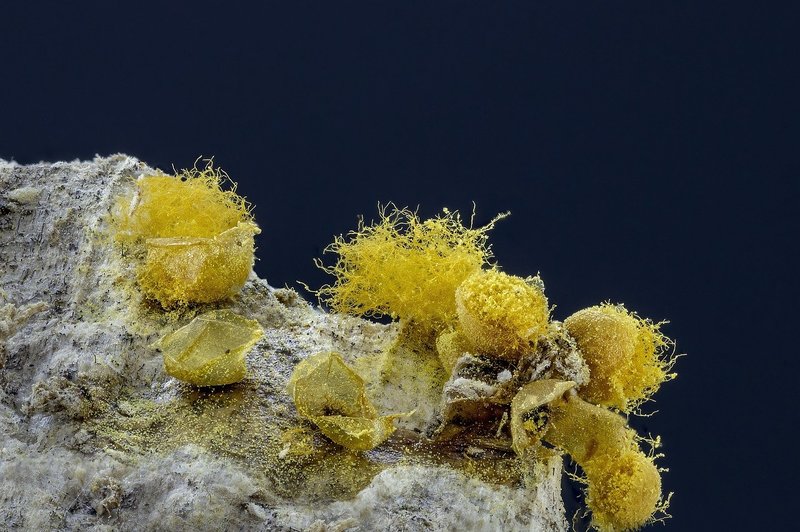When mold is present in a household, you can assume that mold spores are also in the air. For the question on how long do mold spores stay in the air, the easy answer is indefinite. This harmful contaminant can last in the air for an indefinite amount of time if you decide to leave it be.
Mold spores are a health hazard and household problem that needs to be addressed and dealt with. If you end up with them as housemates, the best way to go forward is by learning how to remove them, as well as knowing their effect on your health.

How Long Can Mold Spores Remain In The Air?
As mold inside a room or house accumulates, they start to affect the air. While the mold harbors and colonizes a dark and damp corner, it releases thousands of spores over time. The effects of airborne mold spores can be worse than other air contaminants around because of the nature of how it spreads.
The mold spores become airborne, making it easier to inhale and ingest. It brings a slew of negative health issues and effects to the occupants of the house.
Mold spores are extremely tiny that they float in the air and could be carried for a great distance by the wind or breeze. The scary fact is that they can never be completely removed from the air as long as there is mold present.
Mold spores can stay indefinitely in the air. If there is a damp spot left unattended for about 24-48 hours, you can expect mold spores to congregate on that specific spot, forming a mold.
It does not mean that the airborne mold spores are gone. They are just replaced by newer spores. The ambient temperature is an ideal location for mold to start forming and growing.
Are Mold Spores Harmful To Our Health?
Mold is a type of fungus that can occur both outdoors and indoors. Mold produces spores, which float around in the air. Mold spores are present in an indoor environment and could persist in conditions where even mold itself could not grow.
Avoiding mold spores is extremely hard, especially if there is existing mold in the house already. Mold spores, when inhaled, can pose health issues and problems. It is also dangerous to people with asthma, weakened immune systems, or existing respiratory problems.
When mold spores enter the air, they produce irritants, mycotoxins, and allergens. Some could potentially be toxic and hazardous, more so to individuals who are sensitive to them.
These harmful particles can irritate the nose, lungs, and throat, especially in a person who has asthma, breathing problems, or a chronic lung condition. Moreover, airborne mold spores can aggravate allergies.
It is not uncommon for people with allergies to suffer from full-scale allergy attacks when exposed to even a trace of mold spores. Over time, these allergy attacks would weaken and deteriorate the lungs.
Ways To Get Rid Of Mold Spores
Mold spores can pose a threat to all home occupants’ health. Even if you or your family does not have allergy or breathing problems, exposure to mold spores can irritate your nose, eyes, throat, skin, and lungs. It is why knowing how to combat and rid of mold problems is crucial to know.
Here are ways to control and remove mold spores in the air:
Step #1. Ventilation
The simplest way to decrease the chances of inhaling mold spores is by physically directing them out of your house. Keep your windows and doors open to encourage airflow, and at the same time, discourage mold spores from being comfortable in a particular place for too long. Also, turn on any appliance that urges ventilation, such as air conditioning units and fans.
Mold remover sprays could also help eliminate mold. You can easily find one at a local store or online.
Step #2. Cleaning
Thoroughly cleaning the house can help you physically remove the mold itself. You can use baking soda, vinegar, or hydrogen peroxide as your cleaning agent.
Also, make sure to clean the furniture and carpet as mold also likes to grow there. Here is a helpful guide on how to remove mold on carpet.
Step #3. Regulate humidity levels
Mold mostly thrives on moisture, which is why maintaining the humidity level at an optimal level is crucial. Using a humidifier is a great way to regulate the amount of moisture in your house. Keep the levels of humidity around 30% to 50% all day long.
Keep in mind that humidity levels tend to change over the day. With these constant changes in moisture and air temperature, you might need to check the humidity levels every couple of hours.
Step #4. Using an air purifier
Once you are done removing the root cause and source of mold, use an air purifier to help filter out the remaining spores in the air. To know more tips, you can check this guide out on how to remove mold spores in the air.
Conclusion
Mold spores can be a real nightmare to deal with, especially since they are invisible enemies. Knowing how long do mold spores stay in the air is good knowledge to have in your arsenal if you are trying to remove them from your home and property.
